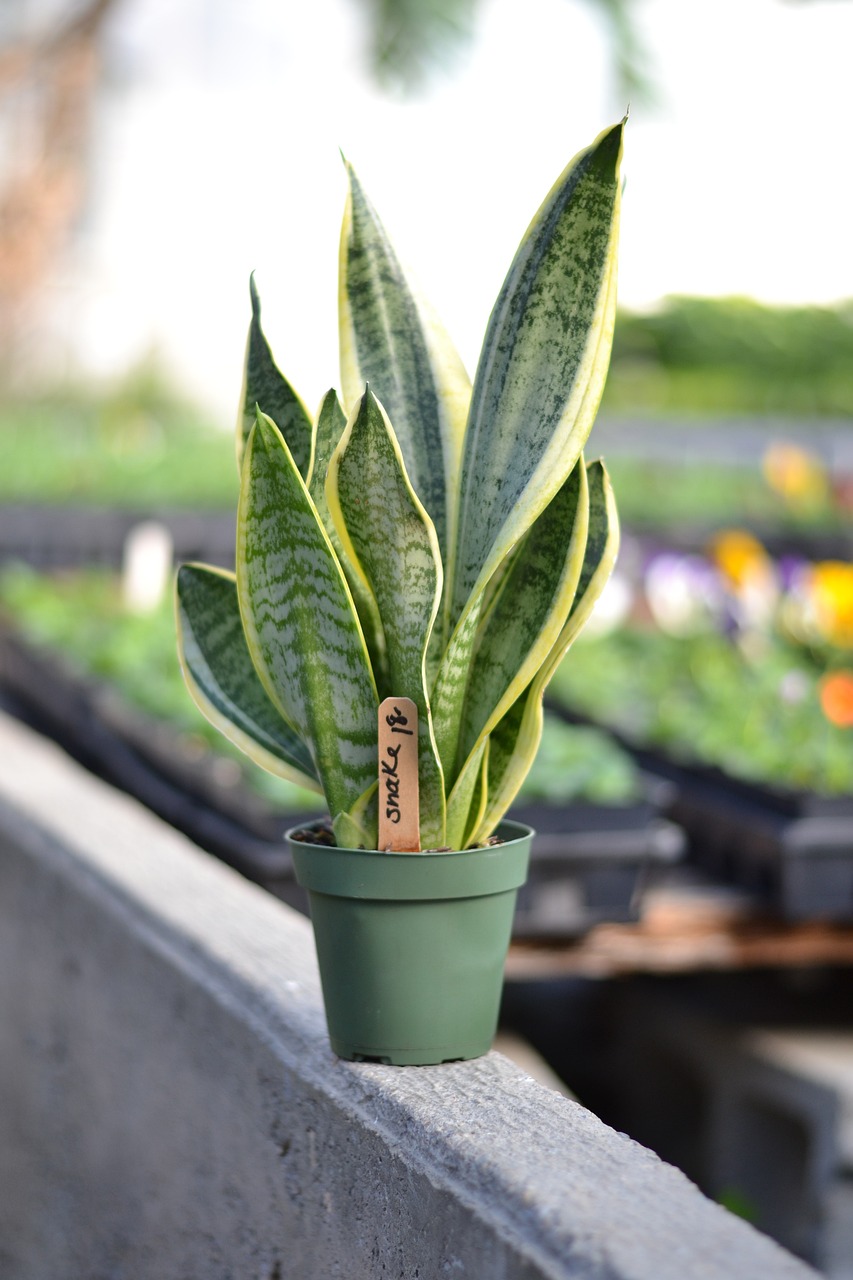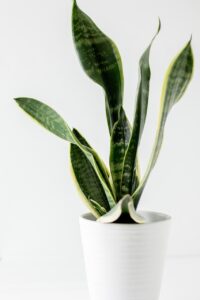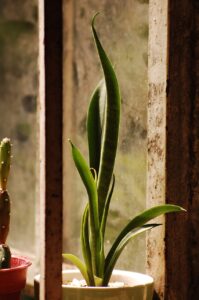Snake Plant
Overview
The Snake Plant, also known as Dracaena Trifasciata, is a robust, easy-care succulent that brings a touch of the tropics to any indoor setting. Native to West Africa, this striped beauty is renowned for thriving in low-light conditions and requiring minimal watering, making it a perfect addition for both novice and seasoned plant enthusiasts. Whether nestled in a cozy corner or standing tall as a living sculpture, the Snake Plant adds a hint of green serenity to your space. Just be mindful if you have furry friends around, as it’s not pet-friendly.

Characteristics
Known for its hardiness, ease of care, tolerance for low light conditions, and distinct vertical, sword-like leaves.
Region
Native to tropical West Africa; commonly grown in USDA hardiness zones 10 to 12.
Natural Habitat
Tropical West African forests.
Cultivation
Thrives in indirect sunlight, requires well-drained soil, and careful, infrequent watering to prevent root rot.
Uses and Benefits
The Snake Plant isn’t just eye candy with its tall, green, and marbled leaves—it’s actually quite the hardworking houseplant. You’ll love how it adds a soothing ambiance to any room, inviting a sense of tranquility and clean air into your space. Researchers have found that the Snake Plant has the ability to purify indoor air by removing toxins such as formaldehyde and benzene2. This feature is particularly beneficial for those keen on bolstering their indoor air quality, especially in spaces where ventilation isn’t always optimal.
Remember, though, while it makes your indoor environment more breathable, keep it out of reach of your furry friends due to its toxic nature1.

Cultivation Tips
When cultivating a Snake Plant, the sweet spot for propagation is during the warmer months—think spring or summer. It’s all about timing and technique; start by either cuttings or division, ensuring your plant baby is at least four inches tall3. Think of your home like a mini climate zone. Snake Plants bask in spots with partial sunlight, so find a cozy corner where the sun pays a visit for just a part of the day. Now, don’t get too splash-happy with the watering can; these guys are pretty independent and excess water is their kryptonite, which can lead to root rot. Stick to a schedule and let the soil dry out between waterings4.
Remember, the key is patience and a little love—your leafy friend doesn’t ask for much! Keep these pointers in mind, and you’ll have a steadfast and striking Snake Plant accentuating your indoor garden.
Seasonal Considerations
When it comes to seasonal consideration for the Snake Plant, patience and understanding of its slower growth rate during the cooler months are key. In the fall and winter, your Snake Plant will take a little rest. It’s best to reduce watering during this period, allowing the soil to dry out completely between watering sessions. You won’t need to fertilize at all, as growth typically stalls in lower light and cooler temperatures.
Come spring and summer, this plant will perk up and may even surprise you with new growth. This is the time to give it a bit more attention, perhaps increasing watering frequency (while still watching for signs of overwatering) and introducing a light feeding routine with a controlled-release fertilizer. Remember, the Snake Plant’s tolerance for neglect is part of its charm; just a little care goes a long way.

Issues and Troubleshooting
Common issues with Snake Plants usually boil down to watering and lighting. If the leaves start to droop or turn yellow, that’s often a telltale sign of too much water. The key is moderation; allow the soil to dry out between waterings to prevent root rot. Snake Plants don’t like soggy feet!
On the flip side, if the foliage looks wrinkled or starts to curl, your plant might be thirsty and craving a drink.
Too much direct sunlight can scor a Snake Plant, causing the leaves to fade and lose their vibrant, stripy patterns. Strive for a happy medium of indirect light to keep the contrasting colors vivid and the leaves standing tall. And don’t be alarmed if growth slows down during the cooler months; this is normal as the plant enters a dormant phase1 4. If you’re diligent with observing your plant and correcting course as needed, your Snake Plant should continue to thrive as a hardy green companion.
History and Folklore
The Snake Plant, also hailed as Dracaena Trifasciata, weaves a rich tapestry of history and folklore in its long, upright leaves. Originating from the lush tropics of West Africa, this plant has been a familiar sight in the homes and folklore of many cultures. In Nigeria, Senegal, Ghana, along with a stretch to the Congo, the Snake Plant has been revered not just for its striking appearance but also for its supposed mystical qualities1 5.
According to some beliefs, its strong, sword-like foliage embodies protective energies, reputed to shield a household from evil spirits. Tales also tell of its power to purify air, granting not just physical but also spiritual cleanliness.
As it crossed oceans and continents, the Snake Plant found its place in homes around the world, turning into an enduring symbol of resilience and a guardian against negativity, in the softest whisper of leaves rustling with ancient stories.
References
1. Snake Plant Care – Growing Dracaena Trifasciata (Sansevieria), https://thegardeningcook.com/snake-plant-care/
2. Snake Plant: Benefits, Types, Cautions, and How to Grow – Healthline, https://www.healthline.com/health/benefits-of-snake-plant
3. Snake Plant: Care & Growing Guide – The Spruce, https://www.thespruce.com/snake-plant-care-overview-1902772
4. Dracaena trifasciata – North Carolina Extension Gardener Plant Toolbox, https://plants.ces.ncsu.edu/plants/dracaena-trifasciata/
5. Dracaena trifasciata – Wikipedia, https://en.wikipedia.org/wiki/Dracaena_trifasciata
Image Credit: Veronicatxoxo
Image Credit: nasser336633
Image Credit: cool2compute
Nicolas Duval
Nicolas is a passionate advocate for nature and the art of wildcrafting. His dedication shines through in Wildcraftia, a website he meticulously crafted to serve as a haven for nature enthusiasts worldwide. Driven by a deep appreciation for nature’s connection to humanity, Nicolas embarked on his journey in 2011 with SmokableHerbs, a platform showcasing his love for nature’s bounty. Building upon this foundation, he established Smokably, a thriving online store offering premium herbs and blends to a global audience.
